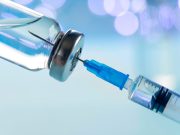People With Xylazine Wounds Face Barriers to Seeking Wound Care
Of those seeking medical care for xylazine wounds, 74 percent reported health care stigma, 58 percent inadequate pain and withdrawal management
Cutting Proportion of RNs on Care Teams Tied to Worse Outcomes
Worse outcomes include avoidable patient deaths, readmissions, longer lengths of stay, decreased patient satisfaction, excess costs
Two-Thirds of COPD Hospitalized Patients Misuse Inhalers
Most misuse inhalers due to critical error in the inhalation technique
Socially, Economically Disadvantaged Communities Lack Access to Buprenorphine
Findings not seen for communities with racial or ethnic segregation alone
FDA Approves Updated COVID Shots for Fall
Low Nurse Staffing Tied to Higher Risk for Patient Death
Low staffing effects only partially mitigated by having temporary staff
Vaccines for Children Program Has Increased Coverage, but Gaps Remain
VFC-eligible children have lower coverage for at least one MMR dose, two to three doses of rotavirus, combined seven-vaccine series
Consistent Sex Disparity Seen in Pain Management
Women less likely to be prescribed pain-related medications than men, even in adjusted analyses
Wearables Linked to Higher Specific, Informal Health Care Use in A-Fib
20 percent of wearable users experienced anxiety and always contacted doctor in response to notification of irregular rhythm
Childhood Vaccinations Have Prevented ~508 Million Lifetime Cases of Illness
Net savings of $540 billion in direct costs and $2.7 trillion in societal costs seen in association with routine childhood vaccinations



















